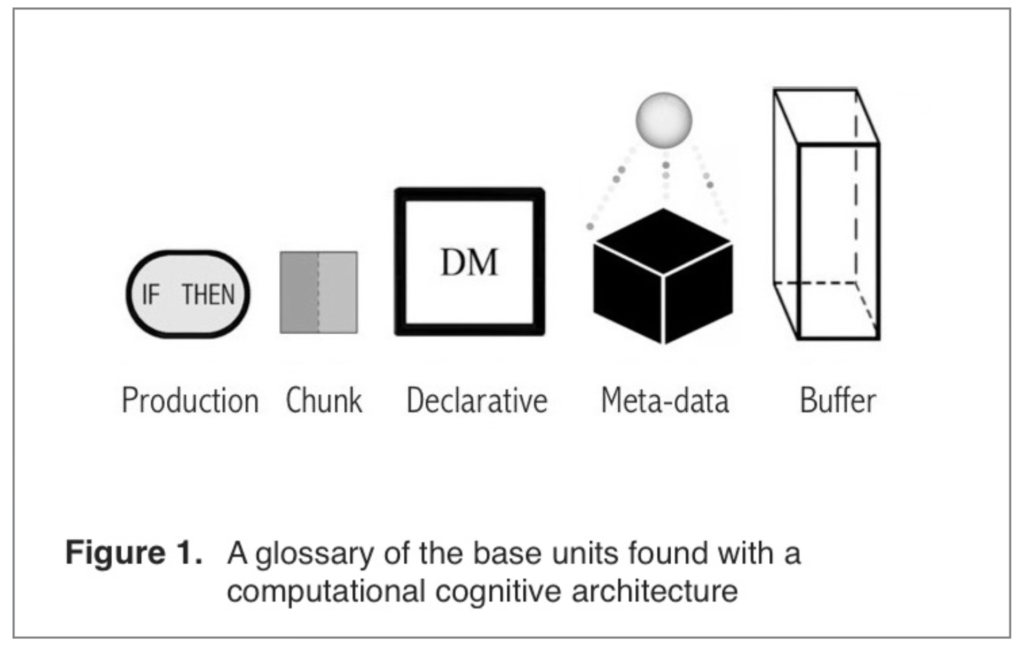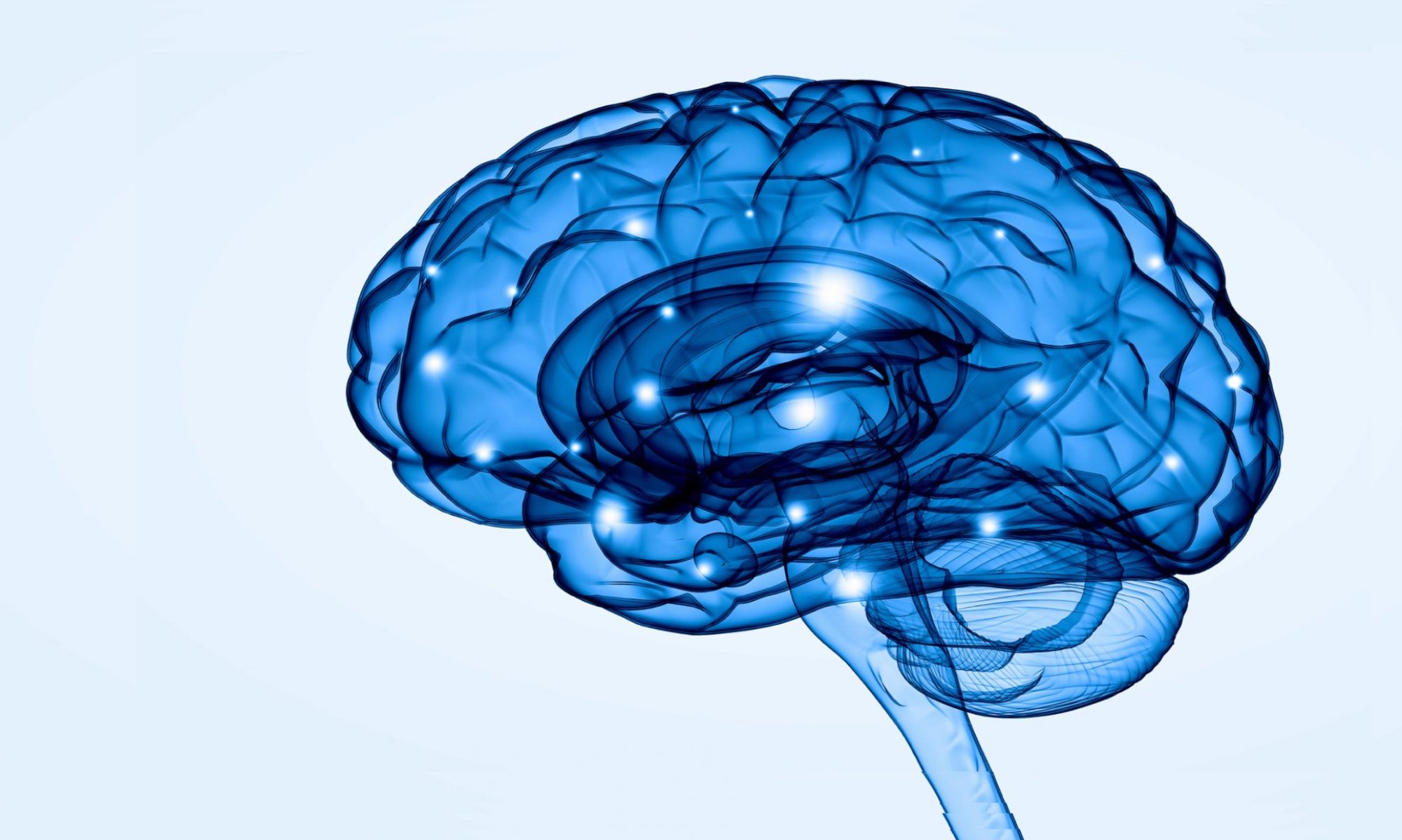1.0 Levels of cognition
This sections will present many of the terms used in the following discussion. Particularly, the categories of information encoded within a computational cognitive architecture (Figure 1).

Informational base units
Meta-data: It is the sum of deep learning. It is not propositionally structured. It is an aggregate single state. This includes emotions (angry, sad), and feelings (tired, noetic).
Knowledge chunk (declarative): Chunks take propositional form. We define propositional as two or more attributes paired by a relation (e.g.: A contains B, or E is larger than F). In micro-cognition, productions may create knowledge chunks, yet they quickly dissolve. In macro-cognition, knowledge chunks are stored and retrieved from declarative memory (DM).
Production rules (procedural): Also called productions, they are encoded as if→then, or condition→action statements. Productions are an actionable form of information. They contain the property of duration, as they act across time. While knowledge chunks are declarative, production rules are imperatives. Production rules form the base of the cognitive architecture. They can be thought of metaphorically as conveyors belts that move an otherwise unmoving system.
As these base units are built up, two main levels appear (Figure 2):
Macro-cognition (knowledge-driven)
Micro-cognition (automatic productions)

Two levels of cognition
To watch the animation: www.youtube.com/watch?v=wR58z3H_IGs
Macro-cognition (knowledge-driven)
– distinguishing module: Declarative memory
Declarative memory (DM) places a knowledge chunk into a buffer. This chunk becomes the buffer condition (in the ‘now’ state) which then directs productions. In Figure 2 we see meta-data (a feeling) direct productions to retrieve a knowledge about that feeling (“this feelings is curiosity, I’d like to learn more.”).
Micro-cognition (automatic productions)
– distinguishing module: Procedural memory
Procedural memory is the storehouse of production rules. These productions arise to match the content of buffers. The buffers contain the ‘now’ state of the system. The content of buffers direct which productions arise to match and fire. In Figure 2 we see meta-data (e.g.: a feelings of curiosity) arise within a buffer. This feeling cues productions that match and then fire automatically. There is no retrieval of knowledge that states “This is a feeling of curiosity.” These automatic productions are the fastest (50m/s), most automatic level of cognition.
In both micro-cognition and macro-cognition, knowledge can direct productions. The knowledge referent (Figure 3) can be directed toward a target internal or external to cognition.
From this chart we see that the nature of metacognition is unlike the previous cognitive levels. Unlike micro-cognition and macro-cognition being quantitative changes, metacogntion is a qualitative change in the target of the knowledge referent. Metacognition employs knowledge that refers to, and directs, cognitive states.
In metacognitive literature, two of the largest areas of metacognitive research are monitoring and control. Monitoring involves knowledge representing an existing cognitive state, such as a feeling or thought. Control involves knowledge representing and directing a future state, such as using logical rules to control reasoning.
Section 2.0 will discuss how metacognitive knowledge can be proceduralized in the process of becoming a skill.
